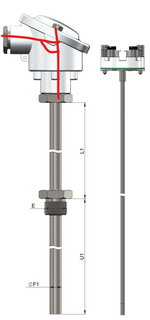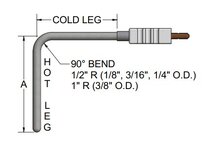Dear all,
I am planning to replicate a relatively simple experiment, but I have no prior experience in temperature measurement and control. I would like to manage it on my own, but I would appreciate any advice you can provide (even just to avoid unnecessary expenses) on selecting the most suitable PT100 sensor.
As you can see from the attached image, I need to immerse the PT100 in distilled water or glycerin, which can reach temperatures up to 300°C. The required accuracy is around ±1°C. Additionally, it is specified that the PT100 should be calibrated for an immersion depth of 40 mm.
I have started reading through several datasheets, but I feel like I am missing something in understanding the specific requirements that the PT100 needs to meet. Could you kindly share any advice and perhaps suggest a website where I can find some cost-effective options?
Thank you in advance for your help, and I look forward to hearing from you.
Best regards,
I am planning to replicate a relatively simple experiment, but I have no prior experience in temperature measurement and control. I would like to manage it on my own, but I would appreciate any advice you can provide (even just to avoid unnecessary expenses) on selecting the most suitable PT100 sensor.
As you can see from the attached image, I need to immerse the PT100 in distilled water or glycerin, which can reach temperatures up to 300°C. The required accuracy is around ±1°C. Additionally, it is specified that the PT100 should be calibrated for an immersion depth of 40 mm.
I have started reading through several datasheets, but I feel like I am missing something in understanding the specific requirements that the PT100 needs to meet. Could you kindly share any advice and perhaps suggest a website where I can find some cost-effective options?
Thank you in advance for your help, and I look forward to hearing from you.
Best regards,



